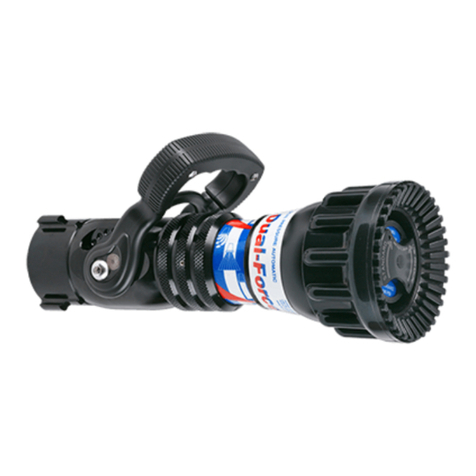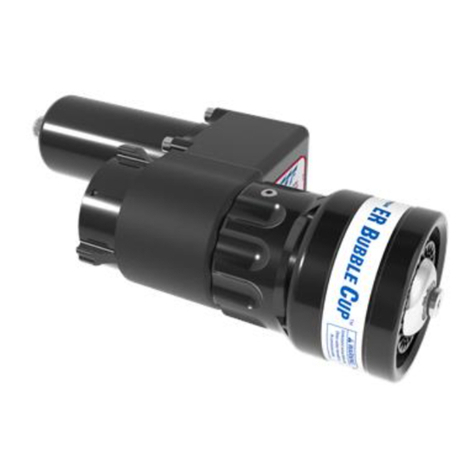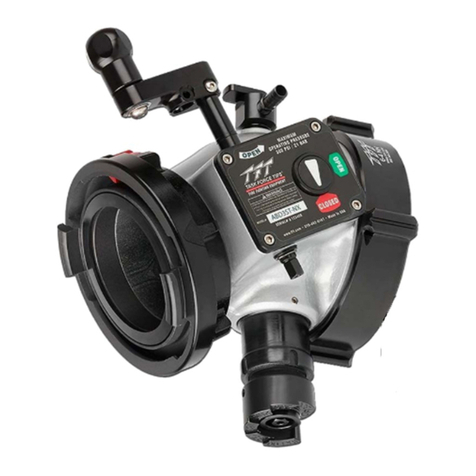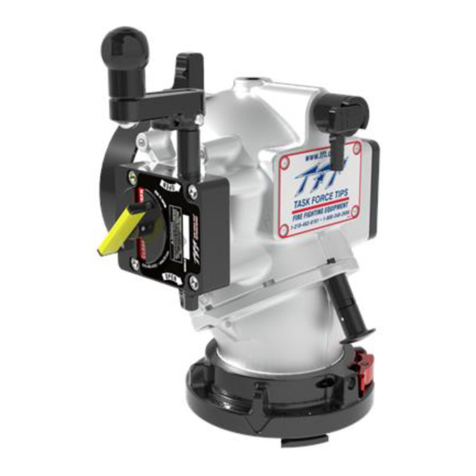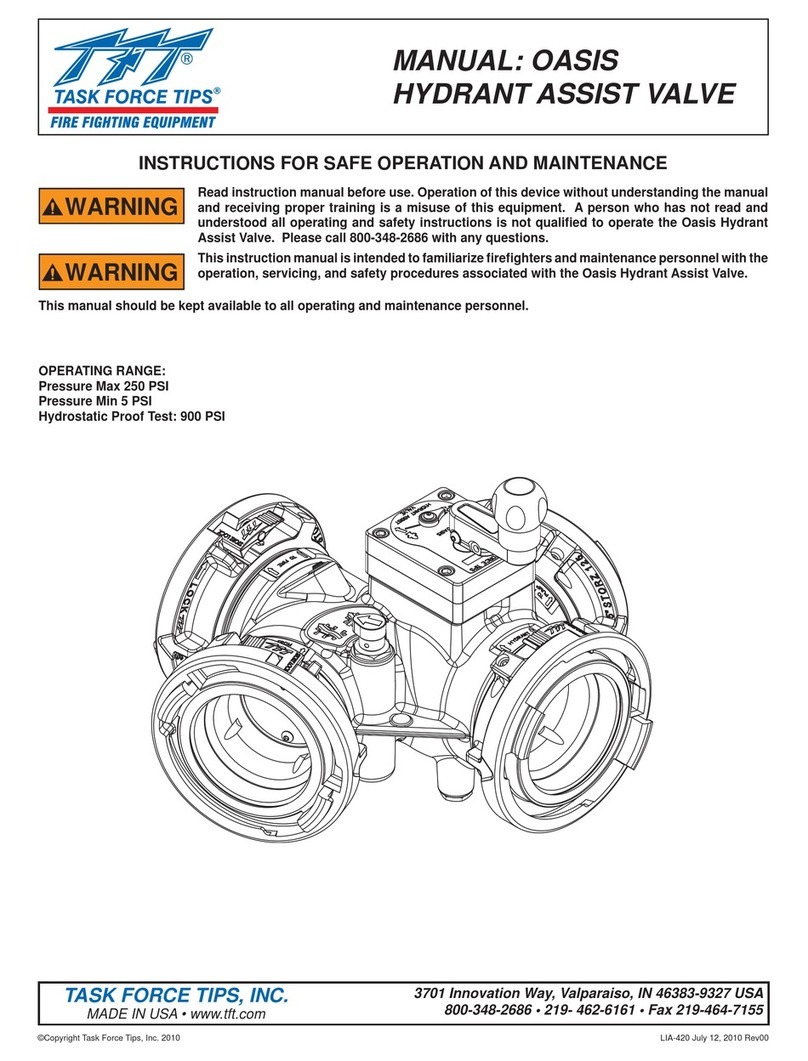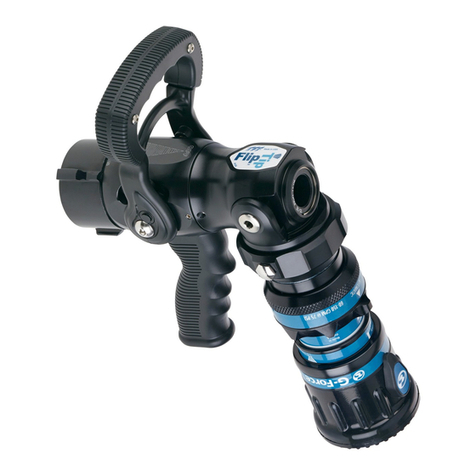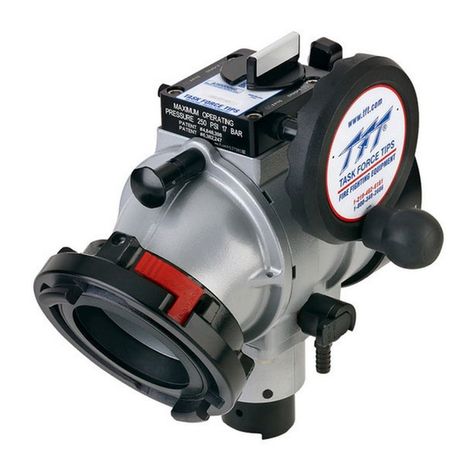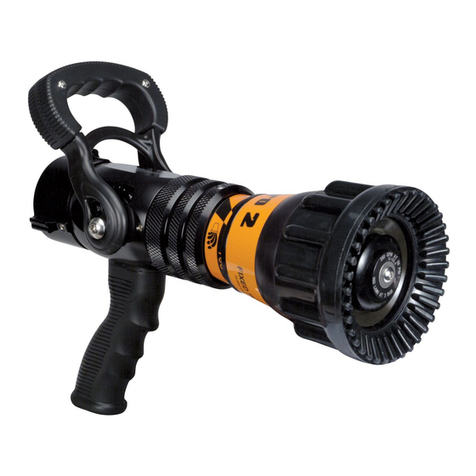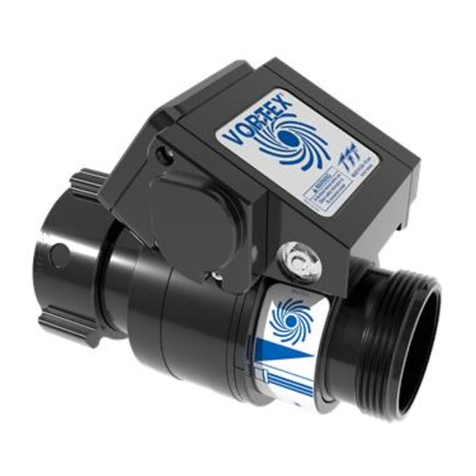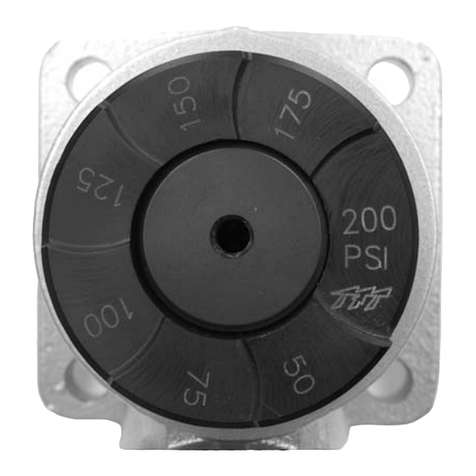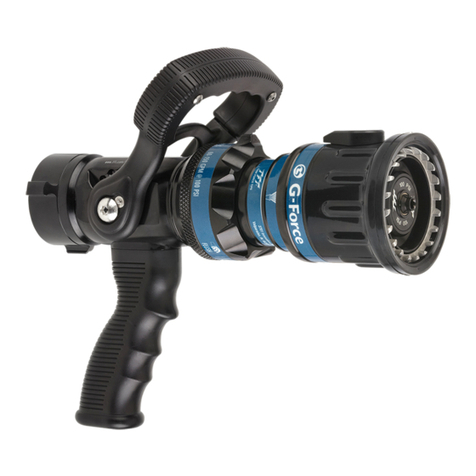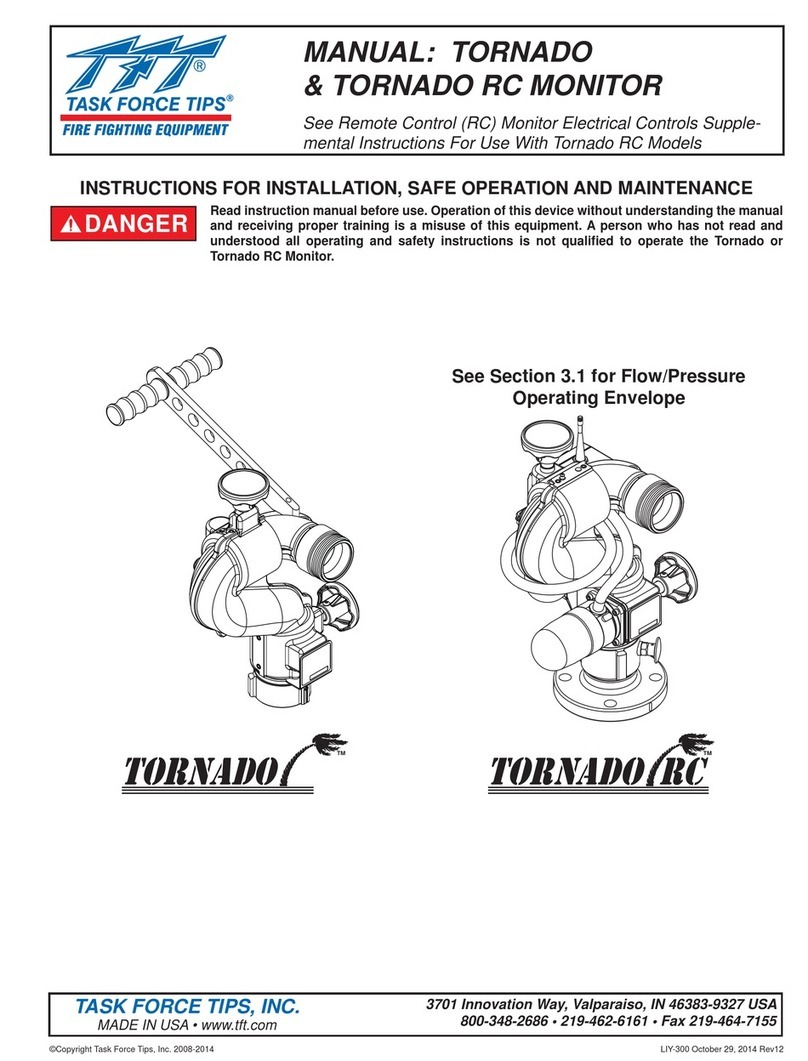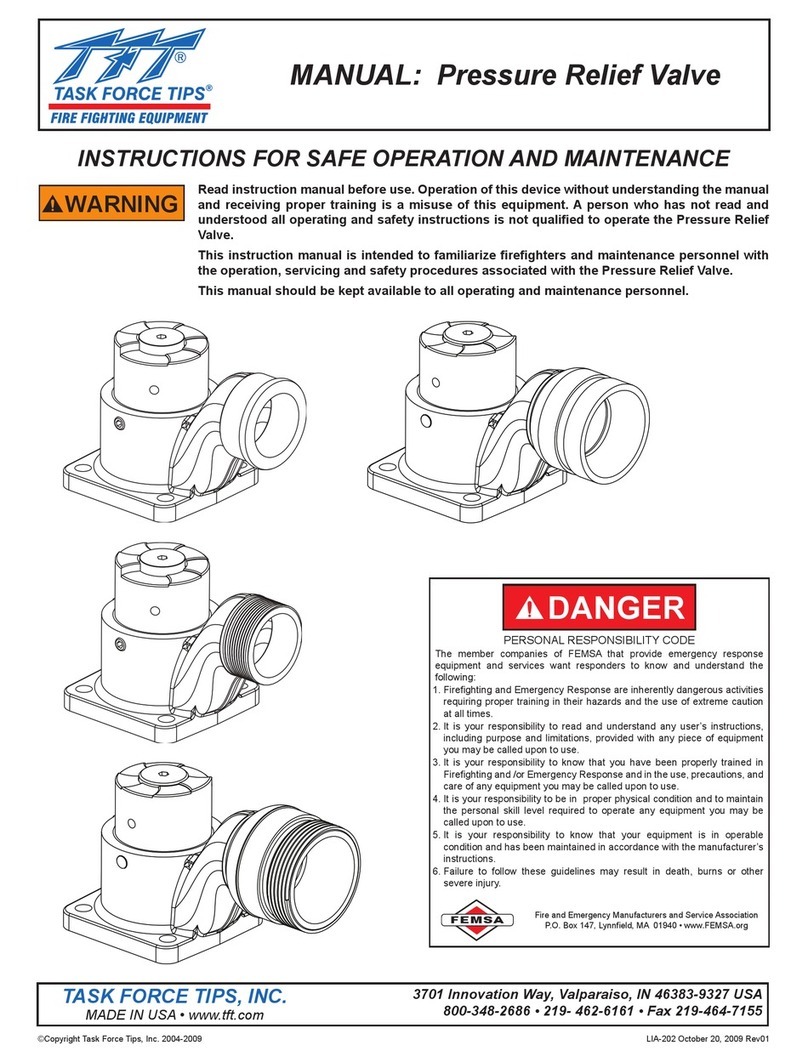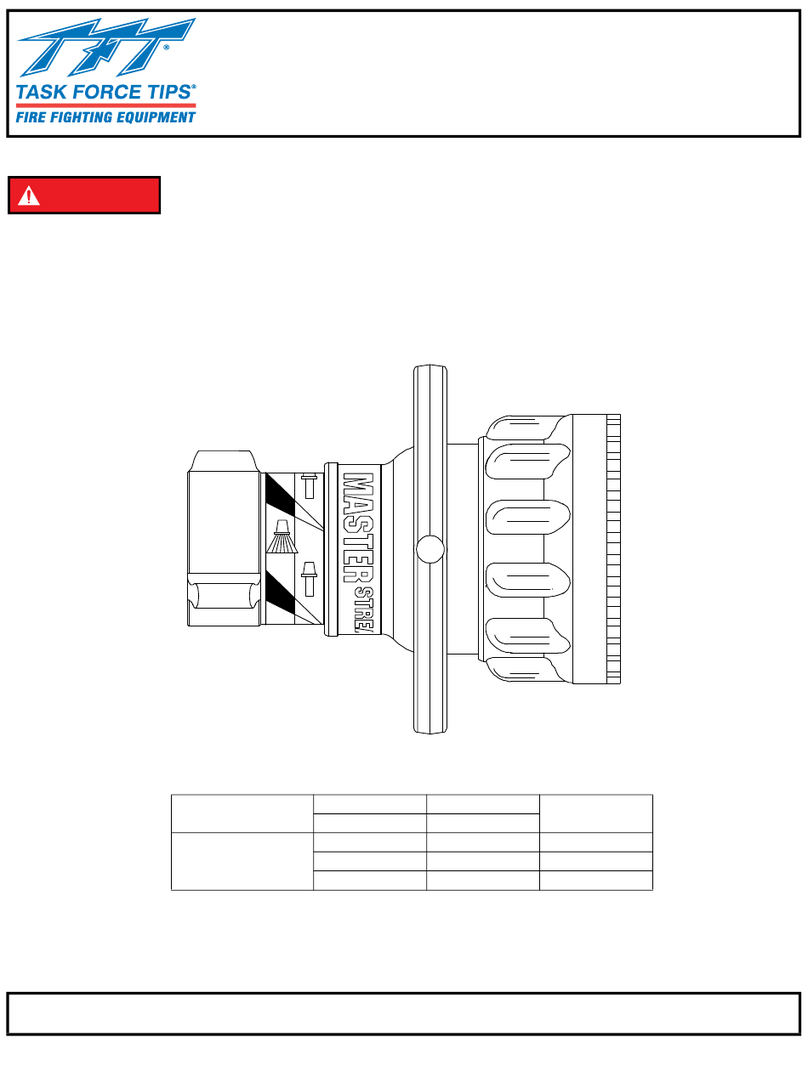
©Copyright Task Force Tips, Inc. 2008-2016 LIA-345 May 19, 2016 Rev07
3
2.0 SAFETY
WARNING Quick changes in valve position can cause high pressure spikes due to water hammer and may result in
damaged equipment which could lead to injury or death. Open and close the valve slowly to avoid water
hammer.
WARNING Kinks in supply hose may reduce water flow and cause injury or death to persons dependant on water flow.
Avoid tight bends to minimize risk of hoseline kinks.
CAUTION Use with salt water is permissible provided the valve is thoroughly cleaned with fresh water after each use.
The service life of the valve may be shortened due to the effects of corrosion and is not covered under
warranty.
3.0 MAINTENANCE
This valve should be disconnected, cleaned and visually inspected inside and out at least twice annually, or as water quality and use
may require. Moving parts such as handles, valve ball and couplings should be checked for smooth and free operation. Seals shall
be greased as needed with a Silicone based grease such as Dow Corning 112. Any scrapes that expose bare aluminum should be
cleaned and touched up with enamel paint such as Rust-Oleum. Replace any missing or damaged parts before returning to service.
Per NFPA 1962; “Special care shall be taken where couplings of dissimilar metals are connected, as corrosion can occur due to
this difference and moisture tends to accelerate this corrosion. Where couplings of dissimilar metals are left connected, they shall
be disconnected and inspected at least quarterly. If corrosion exists, the couplings shall be cleaned and an anticorrosive lubricant
specified by the coupling manufacturer shall be applied to the threads.” TFT recommends Dow Corning 111 or 112 Silicone.
CAUTION Any alterations to the 2.5” Gated Wye and its markings could diminish safety and constitute a misuse of
this product.
CAUTION Maximum operating pressure 300 psi (20 bar). Do not exceed 300 psi (20 bar) on either side of the valve.
CAUTION Valve must be properly connected. Mismatched or damaged connectors may cause leaking or uncoupling
under pressure and could cause injury.
CAUTION Dissimilar metals coupled together can cause galvanic corrosion that can result in the inability to unscrew
the threads or complete loss of thread engagement over time. Per NFPA 1962, “Special care shall be taken
where couplings of dissimilar metal are connected, as corrosion can occur due to this difference and
moisture tends to accelerate this corrosion. Where couplings of dissimilar metals are left connected, they
shall be disconnected and inspected at least quarterly. If corrosion exists, the couplings shall be cleaned
and an anticorrosive lubricant specified by the coupling manufacturer shall be applied to the threads,”
TFT recommends Dow Corning 111 or 112 Silicone.
1.0 MEANING OF SAFETY SIGNAL WORDS
A safety related message is identified by a safety alert symbol and a signal word to indicate the level of risk involved with a particu-
lar hazard. Per ANSI standard Z535.6-2011, the definitions of the four signal words are as follows:
DANGER DANGER indicates a hazardous situation which, if not avoided, will result in death or serious injury.
WARNING WARNING indicates a hazardous situation which, if not avoided, could result in death or serious injury.
CAUTION CAUTION indicates a potentially hazardous situation which, if not avoided, could result in minor or
moderate injury.
NOTICE NOTICE is used to address practices not related to physical injury.
SAFETY INSTRUCTIONS (or equivalent) signs indicate specific safety-related instructions of procedures
